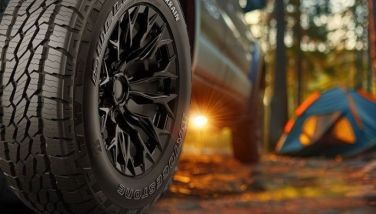Kia bets big in Monte Carlo
Monaco—Carmakers have been introducing new cars in exotic locales way before I became a motoring journalist back in the mid-90’s. More often than not, the more exotic the model, the more exotic the launch venue is.
Which is why quite a few eyebrows went up when Kia announced that it was launching its new Carens MPV in no less than the very playground of the rich and famous, Monaco. A city-state known more for high-stakes casinos and huge gleaming yachts, Monaco would’ve been an ideal place for the launch of a new Ferrari or Lamborghini. But a family MPV?
Clearly, choosing Monaco is Kia’s cheekily confident way of telling the world that its new Carens is right at home in a land where Bentleys outnumber Camrys. Equally telling, Kia officials didn’t overhype the virtues of its new model during the product presentation—preferring to let its product do the talking on the roads of Monaco, parts of which included the legendary F1 track.
While I love sports cars as much as the next car guy, I’ve always had a soft spot for MPVs. They have a very challenging design brief: carry more people and cargo than sedans can, ride and handle well, and look good doing all that. As a car enthusiast/father of three teenage kids, I can easily relate to people-movers—especially well-designed ones that drive exceptionally well.
Measuring 4.5-meters long, the new Kia Carens is more compact yet more spacious than its predecessor. Cabin space is bigger thanks to the new model’s increased wheelbase (up 50mm to 2750mm), skilful packaging and cab-forward design which places the base of the A-pillar above the front-wheel center line. Overall, new Carens is 20mm shorter, 15mm narrower and 40mm lower. Its overall height (1,610 mm) is one of the lowest in class—giving it a sporty appearance.
The Carens EX features 16-inch alloy wheels, privacy glass, front fog lamps, special ‘clean tex’ (easy-clean) seat upholstery, fold-up front seatback tables and a forward-folding front passenger seat. Exterior options will include 17- and 18-inch alloy wheels, HID headlamps, LED front and rear lights, a chrome beltline molding, a three-part tilt-and-slide panoramic moonroof, puddle lights, plus front and rear parking sensors.
Other features that may or may not be available in local models when the Carens makes its Philippine debut this week (at the Manila International Auto Show) are ventilated front seats, automatic climate control, cruise control, 10-way powered driver’s seat with an extendable cushion, a 4.3-inch TFT LCD touchscreen audio system, a Supervision instrument cluster with a 4.2-inch TFT LCD screen and high-definition graphics, side window blinds, a wide-angle ‘conversation mirror’ in the overhead console, and black headlining.
The models we tested in Monaco came with a choice of Black or Black & Beige interior color schemes for the seats and cabin trim, in fabric or leather.
Two gasoline engines (a 1.6 and a 2.0-liter) and one diesel engine power the new Carens. They offer a broad power spread, ranging from 134 ps to 152 ps, together with high fuel economy and low emissions.
The 1.7-liter diesel engine—the sole engine that will be available in the Philippines—produces 136ps and a stunning 33.7kg·m of torque. The diesel Carens hits 100 kph in 10.4 seconds with a manual gearbox and 12 seconds with an automatic.
Both manual and automatic gearboxes boast six speeds—up from five in the previous manual and four from the previous automatic—for improved performance and fuel economy. The automatic features two operating modes—Full Auto or manumatic (via gear lever or paddle shifters).
The suspension and running gear of the new Carens have been comprehensively reengineered to deliver responsive handling, excellent straight-line stability, and exceptional ride quality and refinement on a wide variety of surfaces—attributes I can attest to in our drives on the highways, mountain roads, and cobblestone city streets of Monaco. It simply felt at home on the roads of this fabulous Mediterranean seaside principality. The solidity of the chassis and the supple ride and low NVH levels are impressively close to that of high-end European sedans.
The new Carens rides on a MacPherson strut front suspension mounted on an all-new subframe (to isolate the cabin from road shocks) and a rear CTBA (coupled torsion beam axle), which replaces the previous multi-link system.
The electric power rack-and-pinion steering, which features a combined torque/angle sensor to protect against side wind gusts, is unusually ‘quick’ for this type of vehicle with just 2.7 turns lock-to-lock to deliver responsive handling. Kia’s new Flex Steer system is fitted as standard. This offers three different steering weights to match customer preference with Normal, Sport and Comfort modes—while leaving the gearing unchanged.
The new Carens will feature an all-disc braking system as standard on all models. ABS, Electronic Brakeforce Distribution (EBD), Brake Assist, Vehicle Stability Management (VSM), Hill-start Assist Control (HAC), and Electronic Stability Control (ESC) will all be available.
The standard wheel and tire package for the Carens is a 16-inch wheel with 205/55 R16 tires, while 17-and 18-inch alloy wheels with lower-profile (225/45 R17 and 225/45 R18) tires will be available.
The new bodyshell of the latest Carens incorporates Kia’s latest computer-aided design (CAD) techniques. Manufactured with a high percentage 35.9% of high-strength steel, the new bodyshell is expected to achieve a 5-Star rating in Euro NCAP crash safety tests and a top score in other official national safety tests.
CAD was employed to devise a three-way path to disperse frontal impact forces. The engine bay chassis members and the bodyshell’s side sills are formed from 120kg-class high-strength steel and constructed using large-diameter welds. A major change in the new Carens is the introduction of aircraft-technology structural adhesives, with more than 40 meters of adhesive applied.
The new Carens’ bodyshell also benefits from additional cross members linking the front suspension towers, and forming ring-shaped structures at the base of the B-pillars, the C-pillars and around the tailgate opening.
Hot stamping is used to manufacture the B-pillars in 150 kg-class steel. This production method heats steel to 900º C, then rapidly cools the steel, while simultaneously pressing it into immensely strong components with greatly enhanced crashworthiness—without adding weight.
Standard passive safety kit for the Carens includes a driver’s airbag, three-point seatbelts for all but the center 2nd row seat, and height-adjustable head restraints for all occupants. Options include side and curtain airbags and speed-sensing automatic door locks. Front and rear parking sensors are available, as is a rear-view camera.
The new Carens is fitted with an ‘opposing-type’ windshield wiper system, with the left and right blades synchronized to rise in opposite directions, each sweeping to the A-pillar and cleaning an area which is 10% larger than with conventional wipers.
All things considered, Kia’s new Carens has all it takes to be a global hit. It’s got the looks, the build quality, the performance, as well as the luxury and safety features to put it on top. If Kia gets the pricing right, expect the new Carens to vault to the top not just of MPV buyers’ lists, but even that of a few sedan—or even SUV/crossover—buyers. It’s that good (and good-looking).
- Latest





























